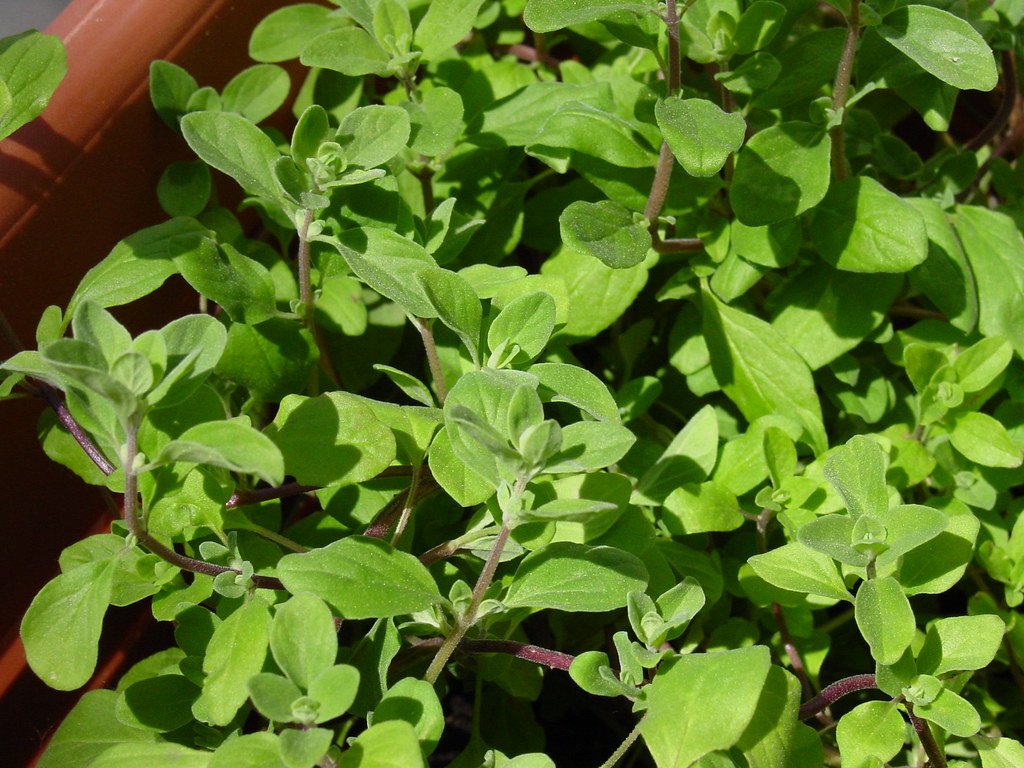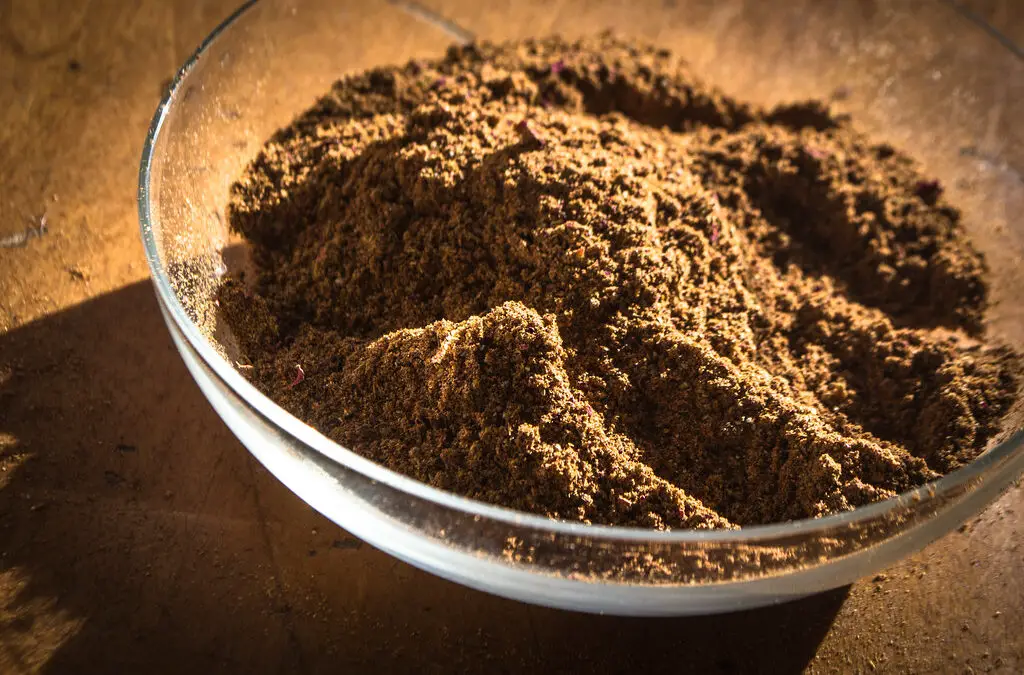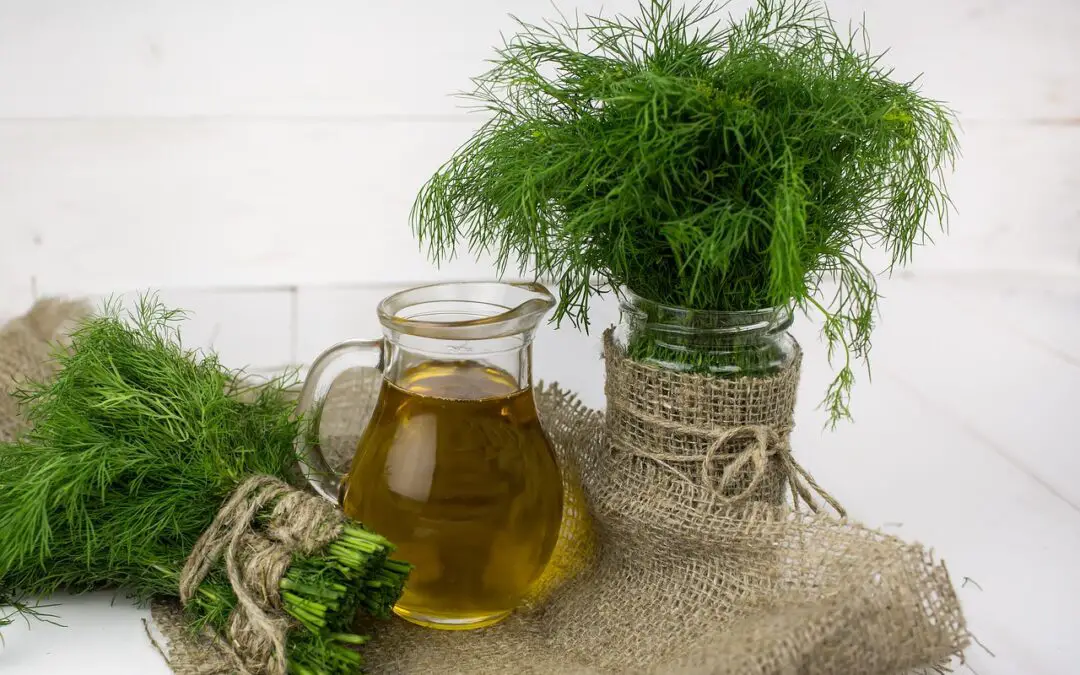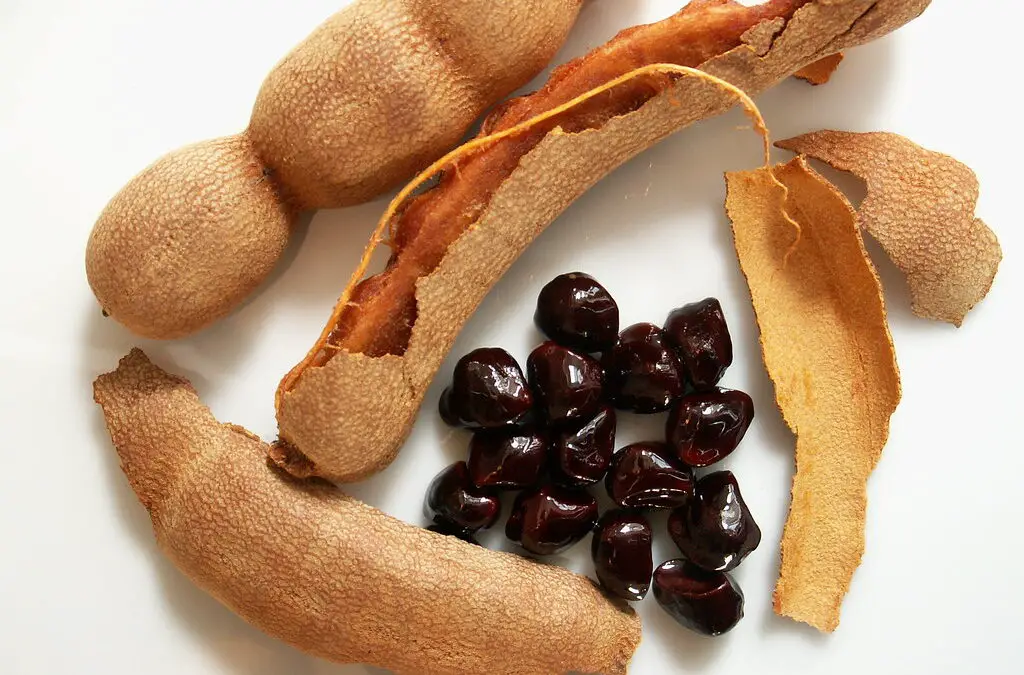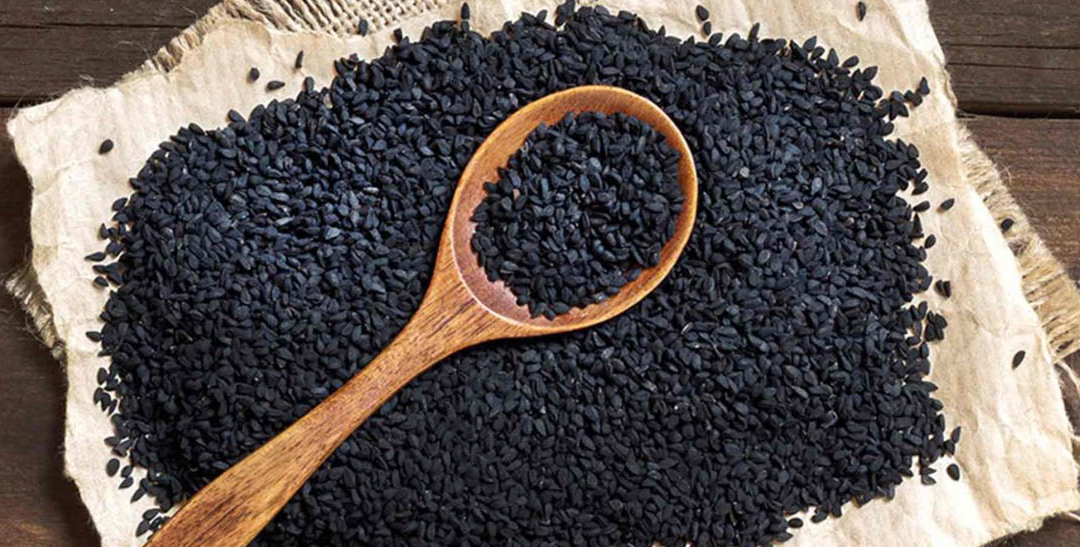Marjoram spice is a popular spice used in Middle Eastern cuisine that adds a unique and flavorful touch to dishes. This herb is native to the Mediterranean region and has been used for centuries in both cooking and medicine. Marjoram is a member of the mint family and has a slightly sweet and citrusy flavor, making it a versatile ingredient in a variety of dishes.
In Middle Eastern cuisine, marjoram is commonly used in meat and vegetable dishes, as well as in spice blends such as za’atar. It pairs well with other herbs such as thyme and oregano, and is often used in marinades and rubs for grilled meats. Marjoram is also known for its health benefits, as it contains antioxidants and anti-inflammatory properties. Whether used fresh or dried, marjoram is a must-have ingredient for any Middle Eastern kitchen.
Origins of Marjoram Spice
Marjoram is a popular herb that has been used for centuries in Middle Eastern cuisine. It is a member of the mint family and has a sweet, slightly bitter flavor that is similar to oregano. Marjoram is native to the Mediterranean region and has been cultivated for thousands of years.
The ancient Egyptians were known to use marjoram in their embalming process, and the Greeks and Romans used it as a symbol of happiness and love. The herb was also used in traditional medicine to treat a variety of ailments, including digestive issues and respiratory problems.
Marjoram was introduced to Europe during the Middle Ages, where it became a popular herb in both culinary and medicinal applications. It was used to flavor meats, soups, and stews, and was also used to treat headaches and promote relaxation.
Today, marjoram is still widely used in Middle Eastern cuisine, where it is often paired with lamb, chicken, and fish dishes. It is also used in salads, sauces, and marinades. In addition to its culinary uses, marjoram is also used in aromatherapy and as a natural remedy for colds and flu.
Overall, marjoram is a versatile herb with a long history of use in Middle Eastern cuisine and traditional medicine. Its unique flavor and aroma make it a popular ingredient in many dishes, and its health benefits make it a valuable addition to any diet.
Culinary Uses of Marjoram Spice
Marjoram in Mediterranean Cuisine
Marjoram is a popular herb in Mediterranean cuisine, especially in Greek and Italian dishes. It is commonly used to flavor tomato-based sauces, stews, and soups. Marjoram is also used in marinades for meats, especially lamb and chicken. It pairs well with other Mediterranean herbs such as basil, thyme, and oregano.
Marjoram is a key ingredient in the famous Italian spice blend called “herbes de Provence.” This blend includes marjoram, thyme, rosemary, savory, and sometimes lavender. It is used to season roasted meats, vegetables, and potatoes.
Marjoram in Middle Eastern Cuisine
In Middle Eastern cuisine, marjoram is a common ingredient in spice blends such as za’atar and baharat. Za’atar is a mixture of dried herbs, sesame seeds, and sumac. It is used to flavor bread, meat, and vegetables. Baharat is a blend of spices that includes marjoram, cumin, coriander, cinnamon, and cloves. It is used to season meat, fish, and rice dishes.
Marjoram is also used in Middle Eastern salads such as fattoush and tabbouleh. In fattoush, marjoram is used to flavor the dressing, which is made with olive oil, lemon juice, and sumac. In tabbouleh, marjoram is used to flavor the parsley and mint mixture.
Overall, marjoram is a versatile herb that adds a unique flavor to a variety of dishes. Its delicate, sweet flavor pairs well with other herbs and spices, making it a popular choice in many cuisines around the world.
Health Benefits of Marjoram Spice
Marjoram is a popular spice used in Middle Eastern cuisine, known for its unique flavor and aroma. However, this herb is not only a culinary delight but also has several health benefits.
Anti-Inflammatory Properties
Marjoram contains compounds that have anti-inflammatory properties. These compounds can help reduce inflammation in the body, which can lead to various health problems such as arthritis, asthma, and heart disease.
Digestive Health Benefits
Marjoram is also known to aid in digestion. It contains compounds that can stimulate the production of digestive juices, which can help break down food and improve nutrient absorption. This herb can also help relieve digestive issues such as bloating, gas, and constipation.
Heart Health Benefits
Marjoram has been found to have heart-protective properties. It contains antioxidants that can help prevent damage to the heart and blood vessels. Additionally, marjoram can help lower blood pressure and cholesterol levels, which can reduce the risk of heart disease.
In conclusion, marjoram is not only a delicious spice but also has several health benefits. Its anti-inflammatory properties, digestive health benefits, and heart health benefits make it a valuable addition to any Middle Eastern dish.
Growing and Harvesting Marjoram Spice
Ideal Growing Conditions
Marjoram is a popular herb in Middle Eastern cuisine, and it is relatively easy to grow. The ideal growing conditions for marjoram include a sunny and warm location, well-drained soil, and moderate watering. The herb can be grown in pots or in the ground, and it can be propagated from seeds or cuttings.
Marjoram seeds should be planted in the early spring, and the seedlings should be thinned out to ensure proper growth. The herb can also be propagated from cuttings taken in the summer. Once the plant is established, it will grow quickly and produce fragrant leaves that can be used fresh or dried.
Harvesting Techniques
Harvesting marjoram is a simple process that can be done throughout the growing season. The leaves can be harvested as soon as they are large enough to use, and they should be picked in the morning when the oils are most concentrated.
To harvest marjoram, simply cut the stems just above a pair of leaves. The leaves can be used fresh or dried, and they can be stored in an airtight container for later use. To dry the leaves, simply tie them in small bundles and hang them upside down in a warm, dry location.
Marjoram is a versatile herb that can be used in a variety of Middle Eastern dishes, including soups, stews, and meat dishes. With the right growing conditions and harvesting techniques, anyone can enjoy the fresh, fragrant flavor of marjoram in their cooking.
Storing Marjoram Spice
Marjoram is a popular herb used in Middle Eastern cuisine for its unique flavor and aroma. To preserve the quality of marjoram, proper storage is key. Here are some tips on how to store marjoram spice:
Drying Marjoram
Drying marjoram is an effective way to store the herb for long periods. To dry marjoram, follow these steps:
- Harvest fresh marjoram sprigs early in the morning when the essential oils are at their peak.
- Remove the leaves from the stems and discard any discolored or damaged leaves.
- Rinse the leaves under cold water and pat them dry with a paper towel.
- Spread the leaves out in a single layer on a baking sheet lined with parchment paper.
- Place the baking sheet in a warm, dry place with good air circulation, such as a sunny windowsill or a dehydrator.
- Let the leaves dry for 1-2 weeks, or until they are completely dry and brittle.
- Store the dried leaves in an airtight container in a cool, dry place away from direct sunlight.
Freezing Marjoram
Freezing marjoram is another way to store the herb for later use. Here’s how to freeze marjoram:
- Harvest fresh marjoram sprigs early in the morning when the essential oils are at their peak.
- Remove the leaves from the stems and discard any discolored or damaged leaves.
- Rinse the leaves under cold water and pat them dry with a paper towel.
- Finely chop the leaves and transfer them to an ice cube tray.
- Pour water into the tray, ensuring it is filled, and freeze until solid.
- Remove the marjoram ice cubes from the tray and store them in a freezer bag or container.
- Label the bag or container with the date and freeze for up to 6 months.
By following these simple steps, you can ensure that your marjoram spice stays fresh and flavorful for your Middle Eastern dishes.
Marjoram Spice vs Oregano
Taste Differences
Marjoram and Oregano are two spices that are often confused with each other. Although they belong to the same family, they have distinct differences in taste. Marjoram has a mild and sweet flavor with hints of citrus and pine, while Oregano has a strong and pungent flavor with a hint of bitterness.
In Middle Eastern cuisine, Marjoram is often used to flavor meat dishes, soups, and stews. Its mild flavor allows it to complement the other spices used in the dish without overpowering them. On the other hand, Oregano is commonly used in tomato-based dishes, such as pizza and pasta sauces. Its strong flavor can stand up to the acidity of the tomatoes and other bold flavors in the dish.
Culinary Uses
Marjoram and Oregano are both versatile spices that can be used in a variety of ways. Marjoram is often used in Middle Eastern cuisine to flavor meats, such as lamb, chicken, and beef. It can also be used to flavor soups, stews, and vegetables. In addition, Marjoram is a key ingredient in za’atar, a popular Middle Eastern spice blend that is used to season bread, meat, and vegetables.
Oregano, on the other hand, is commonly used in Italian and Mediterranean cuisine. It is often used to flavor tomato-based dishes, such as pizza and pasta sauces. Oregano can also be used to flavor meats, such as chicken and fish, as well as vegetables and salads.
When substituting one spice for the other, it is important to keep in mind the differences in taste. If a recipe calls for Marjoram and you only have Oregano, use it sparingly as its strong flavor may overpower the other ingredients in the dish. Similarly, if a recipe calls for Oregano and you only have Marjoram, use it liberally to ensure that the dish has enough flavor.
Overall, Marjoram and Oregano are two distinct spices that have their own unique flavors and culinary uses. By understanding the differences between the two, you can use them to enhance the flavors of your Middle Eastern dishes.
Conclusion
Marjoram spice is a versatile spice that has been used in Middle Eastern cuisine for centuries. Its unique flavor profile makes it a favorite among chefs and home cooks alike. Marjoram has a slightly sweet and citrusy taste, with hints of pine and mint. It pairs well with a variety of dishes, including meats, vegetables, and soups.
In Middle Eastern cuisine, marjoram is used in a variety of dishes. It is often added to meat dishes, such as lamb and beef, to add flavor and depth. Marjoram is also used in vegetable dishes, such as roasted root vegetables and eggplant. It is a key ingredient in many soups, stews, and sauces, adding a subtle layer of flavor that complements the other ingredients.
Marjoram is also known for its health benefits. It is rich in antioxidants, which help protect the body from damage caused by free radicals. It also has anti-inflammatory properties, which can help reduce inflammation in the body. Additionally, marjoram has been shown to have antimicrobial properties, which can help fight off harmful bacteria and viruses.
Overall, marjoram is a valuable addition to any Middle Eastern kitchen. Its unique flavor profile and health benefits make it a versatile spice that can be used in a variety of dishes. Whether you’re a professional chef or a home cook, marjoram is a spice that should not be overlooked.
